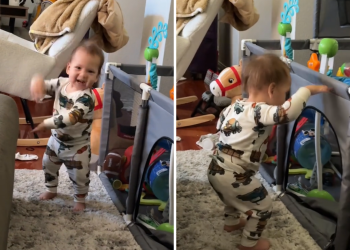President-elect Donald Trump has announced a sweeping plan to change the way U.S. elections are carried out.
“We need to get things straightened out in this country, including elections,” he said, after accepting the “Patriot of the Year” award at a Long Island event organized by Fox Nation on Thursday. Trump, 78, accepted the award, designed to resemble the American flag, after a live performance of Lee Greenwood’s “God Bless the USA” – the president-elect’s go-to entrance song.
“We’re gonna do things that have been really needed for a long time,” he said. “And we are gonna look at elections. We want to have paper ballots, one day voting, voter ID, and proof of citizenship.”
He went on to denounce a recent law passed in California that prohibits local governments from requiring voters to present identification when casting their ballots at the polls. “In California they just passed a law that you’re not even allowed to ask a voter for voter ID. Think of that. If you ask a voter for their voter ID, you’ve committed a crime. We’re gonna get the whole country straightened out,” he said.

Dennis Van Tine/AP
It isn’t the first time Trump has proposed changing elections. During a speech in Johnstown, Pennsylvania, in August, he proposed getting rid of mail-in ballots in favor of same day voting and voter ID laws.
“We have to get back in and we want to change it all. We want to go to paper ballots. We want to go to same-day voting. We want to go to citizenship papers, and we want to go to voter ID. It’s very simple. We want to get rid of mail-in voting,” he said.
According to the Brennan Center, 98 percent of counties in the United States use paper ballots. But since the Covid-19 pandemic, the U.S. has seen major shifts in how elections work, with more people than ever voting early or voting by mail. In 2024, 88,233,886 mail-in and early in-person votes were cast nationally, with 47 states now allowing some form of early voting. Meanwhile, laws requiring voter ID are on the rise, with eight states enacting voter ID laws since 2020.
Trump has previously made an effort to prevent mail-in voting, with his campaign filing several lawsuits in 2020 to stop many of the changes made by states to make it easier to vote by mail. He also called mail-in ballots “dangerous” and “corrupt,” claiming that they’d lead to “massive electoral fraud” and a “rigged” 2020 election. He later blamed mail-in ballots for his 2020 election loss.
While there have been some isolated cases of election fraud as a result of postal voting, such as in the 2018 North Carolina primary, which was re-run after a consultant for the Republican candidate tampered with absentee voting papers, the rate of voting fraud overall in the U.S. is less than 0.0009 percent, according to a 2017 study by the Brennan Center for Justice, external. “There’s simply no basis for the conspiracy theory that voting by mail causes fraud,” Federal Election Commission head Ellen Weintraub said.
Despite railing against mail-in voting, this year Trump changed his tune, actively encouraging his supporters to vote for him early. “I am telling everyone to vote early,” Trump said on a podcast hosted by Dan Bongino.
Meanwhile, in a series of virtual town halls and robocalls, Trump and daughter-in-law Lara Trump, the co-chair of the Republican National Committee, actively encouraged voters to take advantage of early voting options, including mail-in ballots.
“Hi, this is Lara Trump calling on behalf of President Trump’s campaign, and we’re urging you to get out and vote before election day,” one robocall said, according to CNN. Earlier this year, Lara Trump voiced a robocall falsely alleging massive fraud in the 2020 election due to mail-in ballots.
The shift came as Trump sought to appeal to voters in the seven battlegound states, all of which he won.
But a move back to one-day voting would likely hurt rural voters, particularly in swing states that have high rates of early voters, a large number of whom have thrown their support behind Trump in the past. It would also disproportionately affect disabled voters, whose voter participation was boosted in 2020 thanks to mail-in voting.
Meanwhile, Trump’s plan to require “citizenship papers” and voters’ ID could disproportionately disenfranchise nonwhite people to whom such paperwork is not easily accessible. This group of voters is disproportionately nonwhite and identifies as independent or Democrat, according to NPR.
A total of 35 states required a government-issued identification to vote in person in the 2024 presidential election. Of these, 24 required a photo identification such as a driver’s license or a U.S. passport. That is four more states than required the same in the 2020 election.
Newsweek has contacted Trump’s transition team for comment via email.




















